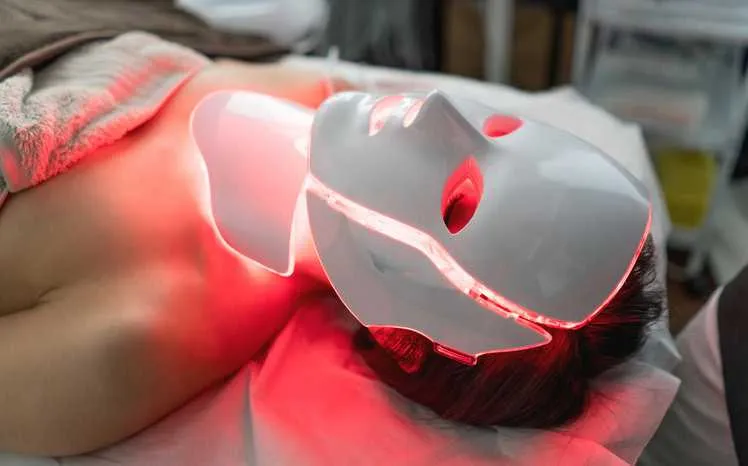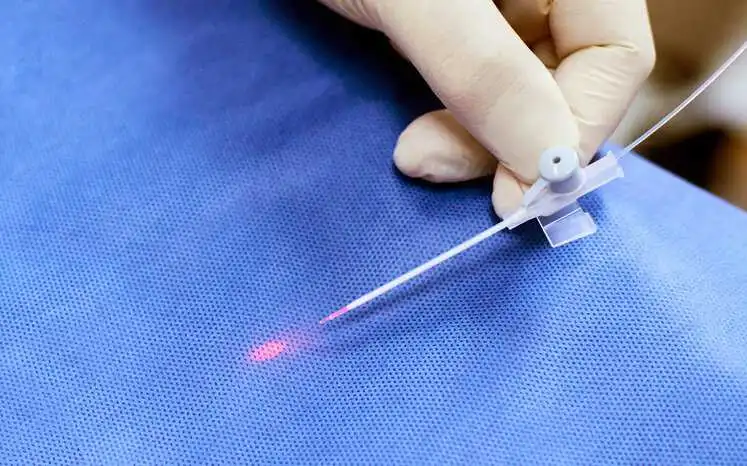ANSI Z136.3-2024: Safe Use of Lasers in Health Care

Blasting a laser into your flesh or skin generally isn’t the brightest idea. Nonetheless, in health care facilities, lasers, of varying types and wavelengths (measured in nm), find critical usage for incisions and excisions in surgery, sealing blood vessels in the retina, removing wrinkles or conducting other plastic surgery processing, treating malignant tissues, and an assortment of other treatments. These processes are valued for their enhanced efficiencies, but they are by no means devoid of hazards. Therefore, ANSI Z136.3-2024: Safe Use of Lasers in Health Care is a pretty crucial document in the health care industry.
Lasers In Health Care
The word laser is an acronym. Standing for “Light Amplification by Stimulated Emission of Radiation,” laser light is monochromatic and can be generated in varying parts of the electromagnetic spectrum, including ultraviolet (UV), visible light, and infrared (IR). In the medical industry and in the application of health care, these coherent light sources can make cuts that do not bleed and can assist in the diagnosis of disease, but they damage the eyes and skin and present non-beam hazards.
What Is ANSI Z136.3-2024?
The American National Standard ANSI Z136.3-2024 provides guidance for lasers in health care, and it is applicable to lasers that operate a wavelengths between 180 nm and 1000 µm on the UV, visible, and IR regions of the electromagnetic spectrum (i.e. “laser radiation”). It provides specific processes to protect anyone who might become exposed to laser radiation and assists in establishing a program to promote the safe use of health care laser systems (HCLSs).
ANSI Z136.3-2024 is applicable to any locations where an HCLS is being used as a medical device. This includes hospital facilities, ambulatory surgery centers (ASC), and individual medical, dental, and veterinarian offices, as well as non-medical locations, such as salons and spas. HCLSs include a delivery system to direct the output of the laser, a power supply with laser control and calibrations, protecting housing, and associated liquids and gases.

Much like other laser safety standards, ANSI Z136.3-2024 outlines laser classification—including Class 1, 1C, 1M, 1, 2, 2M, 3, 3R, 3B, and 4 laser systems, with Class 1 lasers being exempt from any kind of control due to their lack of hazard and Class 4 lasers needing strict controls. The standard also provides guidance to employers for establishing laser safety policies and procedures, along with engineering, procedural, and administrative controls. It also addresses laser safety training programs for the laser safety officer (LSO) and other personnel and details information on the environment, non-beam hazards, and examinations following laser-induced injuries.
Overall, the standard is intended for use by all people associated with the application, installation, operation, calibration, maintenance, and service of an HCLS, as well as others exposed to lasers being used as medical devices or in health care applications.
Changes to ANSI Z136.3-2024
ANSI Z136.3-2024 revises the 2018 edition of the same American National Standard for the safe use of lasers in health care facilities. In all, it is a substantial update, having gone through the following changes of note:
- Section 1.4.2, “Third Party Laser Use,” now clarifies that a third party laser provider is not a replacement for an LSO or laser safety program.
- Added new Section 2.1, “Acronyms and Abbreviations,” which includes an extensive list.
- Added new definition for “laser eye protection.”
- Added units to definition for “pulse duration.”
- Section 4.2.4, “Maintenance and Service of Class 3B and 4 HCLSs,” now requires the health care facility (HCF) to maintain the documentation of laser service technician’s qualifications as required by the Centers for Medicare & Medicaid Services (CMS) and other regulatory bodies.
- Section 4.2.5, “Administrative and Procedural HCLS Control Requirements (Class 3B and 4),” now clarifies to assign a laser operator to every procedure in which a laser is used, except when the laser console is controlled by the laser user.
- Section 4.3.2, “Accessory Equipment (Class 3B and 4),” now requires the LSO or laser operator to ensure that each port is protected or the user informed to wear laser protective eyewear (LPE) or use ocular laser protective filters prior to each procedure.
- Section 4.4.2, “LTCA (Class 3B and 4),” now requires the LSO to conduct a laser hazard analysis for all Class 3B or 4 lasers.
- Section 4.4.4, “Patient Eye Protection,” now calls for the LSO to verify that windows of laser protective barriers are appropriate for the wavelength being used.
- Section 4.4.4 added language that approved and tested eyewear should be utilized when the laser is used for treatments on the face and neck.
- The signal word “Warning” was clarified to indicate an imminently hazardous situation that, if not avoided, could result in death or serious injury.
- New Section 4.7.5, “Existing Laser Controlled Area Signs,” was added and includes language to update LCA signs in accordance with ANSI Z136.1 revisions.
- Section 5.1, “Administration” was expanded to clarify that the purpose of the laser safety program is to provide a safe environment for staff and for the patient.
- Section 7.6.2, “Endotracheal Tube (ETT) Fires,” removed ambiguity by clarifying that anesthesia personnel need to use FDA approved ETT.
ANSI Z136.3-2024 was published by the Laser Institute of America (LIA), an ANSI-accredited standards developing organization. Another important standard published by LIA, ANSI Z136.1-2022: American National Standard for Safe Use of Lasers, can be a useful companion to ANSI Z136.3-2024. ANSI Z136.3 may be used independently of ANSI Z136.1; however, instances in which additional guidance from ANSI Z136.1 is needed are noted in the text of ANSI Z136.3. You can get both of these standards together as:
ANSI Z136.3-2024: Safe Use of Lasers in Health Care is available on the ANSI Webstore.






